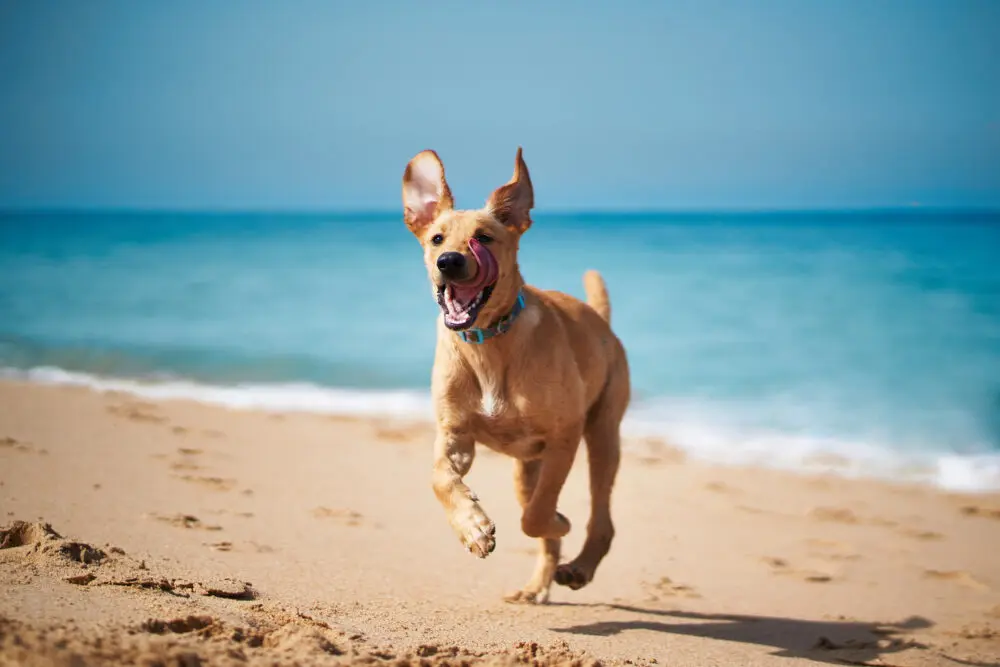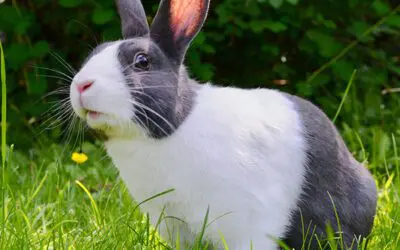Summer is here, which for many is their favourite season. The combination of warmer weather and a chance to enjoy the outdoors in the drawn-out evenings make for the perfect opportunity to meet up with friends and enjoy long strolls in the sun.
Although summer is a time for lots of fun, it also brings unique challenges to pet owners and their furry friends.
What seasonal stressors should you be on the lookout for? Read on to learn our top 5 hazards to pets this summer and how you can keep your pet happy and healthy all season long.
- Ensure Proper Hydration
One of the most important summer pet care tips is ensuring proper hydration for your pet. Just like we need to up our fluid intake when it’s hot, your pet should have access to a constant supply of fresh water to prevent dehydration. Make sure to provide multiple water sources throughout your home and, if possible, in the shade outside too. For pets that live outdoors, such as some rabbits and guinea pigs, ensure that their water bottles remain topped up with ample amounts of water throughout the day and remember to replace this regularly to keep it fresh and cool.
What if your pet is reluctant to drink? Some animals, such as cats, require less water than others to stay hydrated, but they must be still offered a constant supply of water that they can easily access.
How can you encourage your pet to drink more?
- Regularly top up their water.
- Carry a water bottle and a convenient collapsible bowl on walks and when away from home.
- Consider using a pet water fountain to keep water moving and fresh. These are particularly popular among cats.
- For small animals, introduce leafy greens with a higher water content to their diet alongside their existing water supply.
- Use ice cubes or frozen water bottles to keep water cooler for longer, especially if you know you may not be around to replace it as frequently.
- Keep your pet cool
Keeping your pet cool during the hot summer months is essential to prevent heatstroke. Different pets require different methods of keeping cool, but all pets need access to a shaded resting place to escape the heat.
If you have a pet that lives outside, make sure that their home or hutch is situated out of the direct sunlight at peak times of day, and in the shade as frequently as possible. For dogs, cats and other pets that live indoors, make sure that they have access to the coolest rooms in your home. This could be tiled rooms, rooms with fans or just rooms that let the least direct sunlight in throughout the day. If you don’t have trees or other natural shrubbery providing shade, use umbrellas or tarp to make a shady area for your pet to rest outside the house. For birds, ensure their cages are kept out of direct sunlight and mist them lightly with water to help them cool off.
- Consider the time of day that you exercise your pet.
Exercising your pet is important for maintaining their health and happiness, but it can be more challenging to find the right time in the summer when working around more intense heat.
Early mornings and late evenings are typically the best time to take, or let, your pet out for some fresh air. If you aren’t an early riser, try going out with your pet as soon as possible, before the mid-day heat. The earlier you can get out with your pet, the less time the ground has to warm up, making it more comfortable for their sensitive paw pads. To test if the ground is safe to walk your dog on, place the back of your hand on the pavement to test ground heat. If the ground is uncomfortably hot for you, it’s uncomfortably hot for your pet too.
If you must go out in the heat of the day, consider protective boots for your pet, take plenty of water with you and avoid any high intensity exercise that could tire your pet.
- Don’t neglect the SPF
Did you know that pets can get sunburn?
Particularly for pets with short fur or a light-coloured coat, sunburn can be a real concern during the warmer months. Over exposure to the sun’s rays can lead to burns, skin damage and an increased risk of cancer in pets.
For dogs and cats, protect areas of exposed skin – such as the nose, ears and tummy – with a pet safe sunscreen. Apply the sunscreen before they go outside, as per the recommendations on the packaging.
Smaller animals and birds are also susceptible to sunburn, but it may be more of a challenge to douse them in sunscreen. This is when it’s especially important to place their cage or hut in the shade, especially during the peak hours of the day such as in the early afternoon.
If you do notice that your pet shows symptoms of sunburn or heatstroke, don’t delay getting help. Contact your vet if you have any major concerns about your pet’s health. Or, for superficial sunburn, use a high-quality wound healing cream to aid your pet’s recovery.
- Be on the watch for flystrike
Flystrike is a condition that can affect several pet species during the warmer months of the year. Small animals such as rabbits and guinea pigs are typically associated with the disease, but dogs are not immune. Flystrike occurs when flies lay eggs on an animal, and the larvae from these eggs burrow into the skin. This can cause severe pain, infection and even death if left untreated.
To prevent flystrike, maintain excellent hygiene for your pet. Ensure that their huts, cages and items such as blankets are clean. Frequent grooming and daily checks for signs of these eggs can help you notice and remove them before they burrow into the pet’s skin. In particular, check around some of the most common areas where flies might lay eggs, such as their bottom, open wounds, damp fur and skin, matted or tangled fur and skin folds. These areas are all ideal breeding grounds for flies, so make sure your pet’s fur is trimmed and dry, particularly in these areas.
In conclusion, ensuring that your pet is topped up with fresh water, shady spots, pet-safe sunscreen and regular exercise during the cool parts of the day will help them to remain happy and healthy all summer long.
Got any questions? Reach out to a member of our team today, or have a look at our wound healing cream, Omnimatrix, an excellent solution to cuts, grazes and sun damage.
Get in touch with a member of our team.
Read more news here…





0 Comments